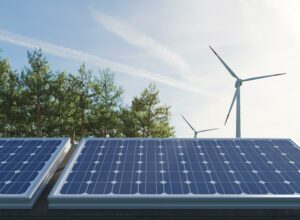In a bold move towards a greener future, Kerala’s Draft Power Policy 2025 introduces a crucial step: households consuming over 500 units of electricity per month may soon be mandated to fit rooftop solar panels. This step is intended to reduce dependence on the conventional grid and promote the use of clean energy among high-consuming households. With electricity costs often exceeding ₹5,000 for such homes, the policy makes solar power a cost-effective and environmentally friendly choice.
The urge to install solar systems on the roofs is not merely to reduce bills, it’s a larger design to address Kerala’s growing energy demand while, concurrently, fulfilling the environmental aspect. This is also a response to the state’s long-term target of developing 3.5 GW of solar power capacity by 2030.
Why the Change? The State’s Need for Solar Energy
Kerala, being under a green canopy and receiving ample sunlight, is most suited to harness solar power. The state already adds 30 to 35 megawatts of on-grid solar capacity monthly. Going by this rate, experts believe that solar can emerge as the state’s top electricity source in the near future, even overtaking hydropower.
The advantages of solar power cannot be ignored. For residences that consume large amounts of electricity, solar power offers a genuine opportunity to cut energy bills, stabilize the cost of electricity, and help make the energy grid cleaner. In Kerala’s new policy, the plan is to lower the total energy burden off the grid and encourage a more decentralized energy system.
The Infrastructure: Kerala’s Housing Pattern
Kerala’s housing pattern is unique and is one that will facilitate this transition more smoothly than in any other state. Most houses here are built quite close to one another, but even so, there is adequate space. No one competes for space in the form of high-rise buildings, as happens in overpopulated urban regions. Hence, Kerala is well placed to use its housing spaces to create solar power on a large scale.
Government Subsidies and Incentives
One of the key characteristics of this change is to make installing solar panels economical for families. In the central government’s PM Surya Ghar: Muft Bijli Yojana, a subsidy is being given to families that can avail rooftop solar panels up to ₹78,000. This subsidy also makes the use of solar power even more economical for the average consumer and helps to eliminate the cost barrier at the time of purchase.
Kerala’s Solar Vision for 2030
Draft Power Policy 2025 of Kerala outlines a vision of increasing the solar capacity of the state. The state is to achieve 3.5 GW of solar power by the year 2030, much of which will be through decentralized solar projects. This is supplemented by utilizing 1.5 GW from non-solar renewable energy sources. To allow this growing capacity, Kerala will strengthen its transmission network to reach a peak of up to 10 GW by the end of the decade.
The decentralized character of the state’s sources of solar power also means that it plans to induce the development of small, community-scale energy solutions. By inducing rooftop solar installations on residential homes, Kerala plans to tap the immense potential of individual homes to supply the state with overall power generation.
Hydropower vs. Solar
Currently, hydropower is Kerala’s largest source of electricity, but the energy source is increasingly being limited by factors such as climate change and the geographical boundaries of the state. Therefore, solar power is an increasingly plausible option to fulfill Kerala’s growing energy needs. Experts estimate that if Kerala continues in the same vein, solar power will eventually be the dominant source of electricity, taking over from hydropower.
By investing in solar power, Kerala is not only enhancing its energy security but is also contributing to taking the world towards cleaner and sustainable energy sources. With ample sunshine and available roof space, Kerala’s solar energy entry can be used as a model by other Indian states to emulate.
The Future of Solar Power in Kerala
For homeowners in Kerala, the need for solar installations on roofs is both a challenge and an opportunity. While the initial cost of installation might seem to be infeasible, the long-term benefits, ranging from reduced electricity bills to a smaller carbon footprint, render it a sound proposal. Additionally, with the government subsidy, the economic strain of adopting solar technology is minimized.
Besides, as Kerala aims to expand its solar infrastructure and capacity, consumers will also see better energy distribution network improvement, which will translate into a more efficient and reliable power supply. This will also make solar energy more viable and attractive as a source of mainstream power in the state.
The move towards rooftop solar installations for high electricity consumers marks a significant step towards sustainable energy and reducing grid dependence. With government incentives and a clear solar vision for 2030, this initiative promises long-term environmental and economic benefits for the state, positioning Kerala as a leader in renewable energy adoption.






